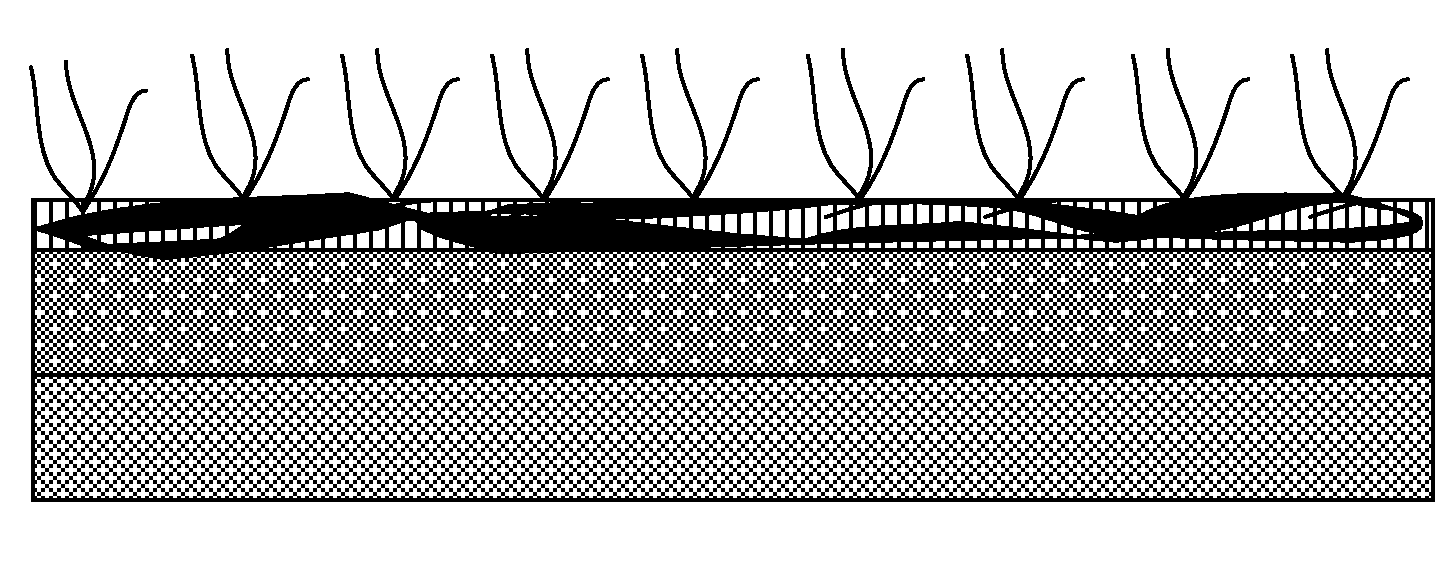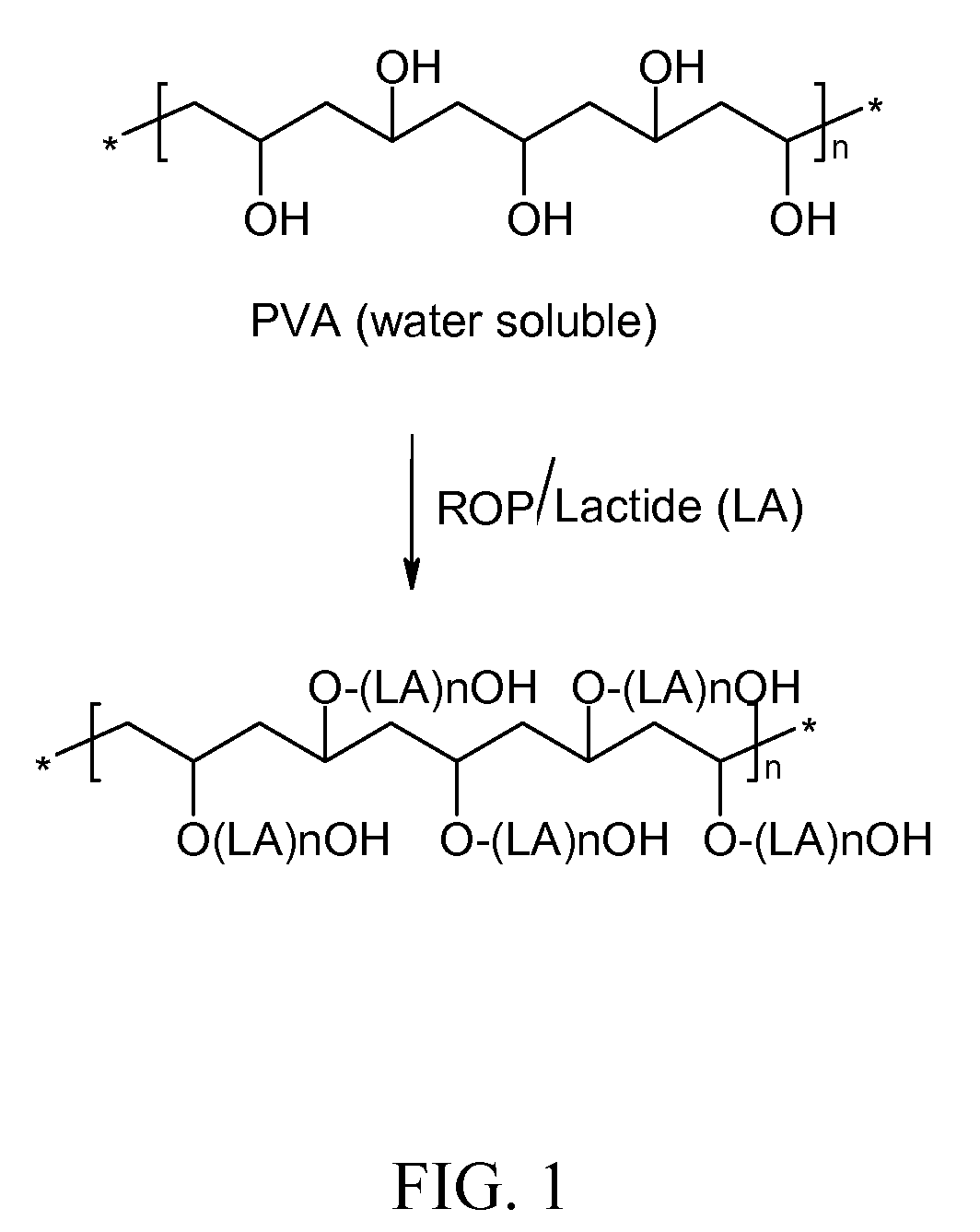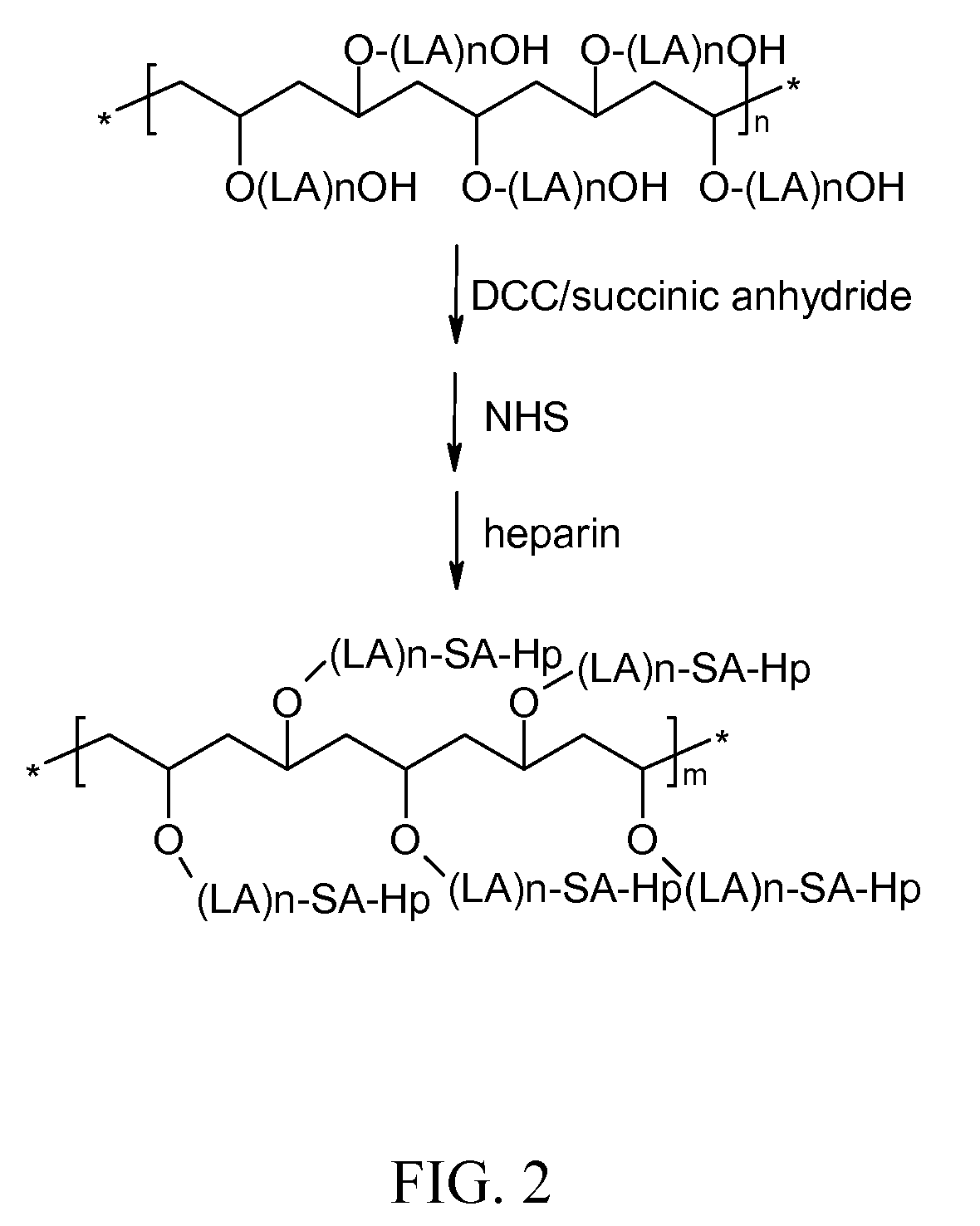Coating for a Medical Device Having an Anti-Thrombotic Conjugate
- Summary
- Abstract
- Description
- Claims
- Application Information
AI Technical Summary
Benefits of technology
Problems solved by technology
Method used
Image
Examples
example 1
Preparation of a Comb-Type Biodegradable PLA Via a Ring Opening Polymerization of a Lactone Dimers (Lactide) with poly(vinyl alcohol, PVA) as the Initiator
[0049]As shown in FIG. 1, a pre-determined amount of d,1-lactide (from Purac, USA) is transferred to a dried round bottom glass reactor equipped with a magnetic stir bar. A pre-determined amount of poly(vinyl alcohol), (e.g. fully hydrolyzed Elvanol 70-03 from Du Pont, Inc.) and Stannous Octoate (Sigma, St. Louis, USA) are added to the glass reactor. The glass reactor is then sealed with a stopper and cycled three times between an argon gas and vacuum to remove the air and oxygen inside the reactor. The sealed reactor is then gradually heated to 140 C under vacuum and kept stirred with the magnetic stir bar. Upon completion of the reaction, the polymer is dissolved in methylene chloride and precipitated in methanol and dried under vacuum and low heat.
example 2
Preparation of Comb-type Anti-Ahrombotic Heparin-Bioabsorbable Polymer Conjugate
[0050]As shown in FIG. 2, a comb-type PLA, such as created in accordance with Example 1 above, is dissolved in anhydrous dimethylformamide (DMF), followed by dissolution of succinic anhydride and dicyclohexylcarbodiimide (DCC). The resulting solution is kept for 5 hours at room temperature under vacuum. The byproduct, dicyclohexylurea (DCU), and unreacted DCC and NHS are removed by filtration. The resultant intermediate is then re-precipitated in methanol and dried in vacuum oven. The carboxylic acid end caped intermediate is then activated by addition of N-hydroxylsuccinimide (NHS) in dimethylformamide and further reacted with heparin for 4 hours at room temperature to make the final comb type conjugate of comb type biodegradable polymer-heparin conjugate of the present invention. The final conjugate is precipitated and freeze-dried.
example 3
Coating of A Drug Eluting Stent With an Outmost Layer Comprising a Comb-Type Absorbable Polymer-Heparin Conjugate
[0051]As shown in FIG. 3, the surface 10 of a cobalt chromium stent is spray coated with a drug containing polymeric solution, which may comprise for example, ethyl acetate (EA) containing PLGA and rapamycin. The weight ratio between PLGA and rapamycin is 2:1. After the drug-containing layer 20 is dried, a coating solution containing a comb-type absorbable polymer-heparin conjugate is spray coated onto the first drug-containing layer 20. After the layer is dried, a thin film 30 containing the comb-type absorbable polymer-heparin conjugate is formed on the outmost surface.
[0052]Coatings such as those described above can be thin, typically 5 to 8 microns deep. The surface area of a device such as a stent, by comparison is very large, so that the entire volume of the beneficial agent has a very short diffusion path to discharge into the surrounding tissue. The resulting cumu...
PUM
| Property | Measurement | Unit |
|---|---|---|
| Mass | aaaaa | aaaaa |
| Thickness | aaaaa | aaaaa |
| Diameter | aaaaa | aaaaa |
Abstract
Description
Claims
Application Information
 Login to View More
Login to View More - R&D
- Intellectual Property
- Life Sciences
- Materials
- Tech Scout
- Unparalleled Data Quality
- Higher Quality Content
- 60% Fewer Hallucinations
Browse by: Latest US Patents, China's latest patents, Technical Efficacy Thesaurus, Application Domain, Technology Topic, Popular Technical Reports.
© 2025 PatSnap. All rights reserved.Legal|Privacy policy|Modern Slavery Act Transparency Statement|Sitemap|About US| Contact US: help@patsnap.com



